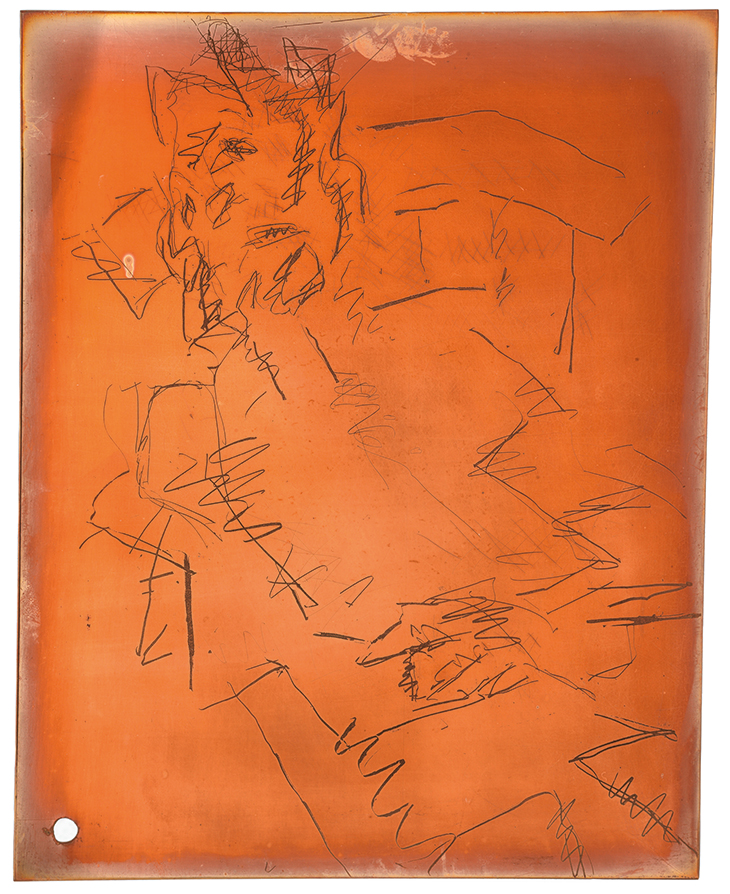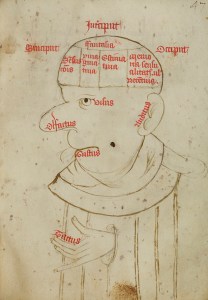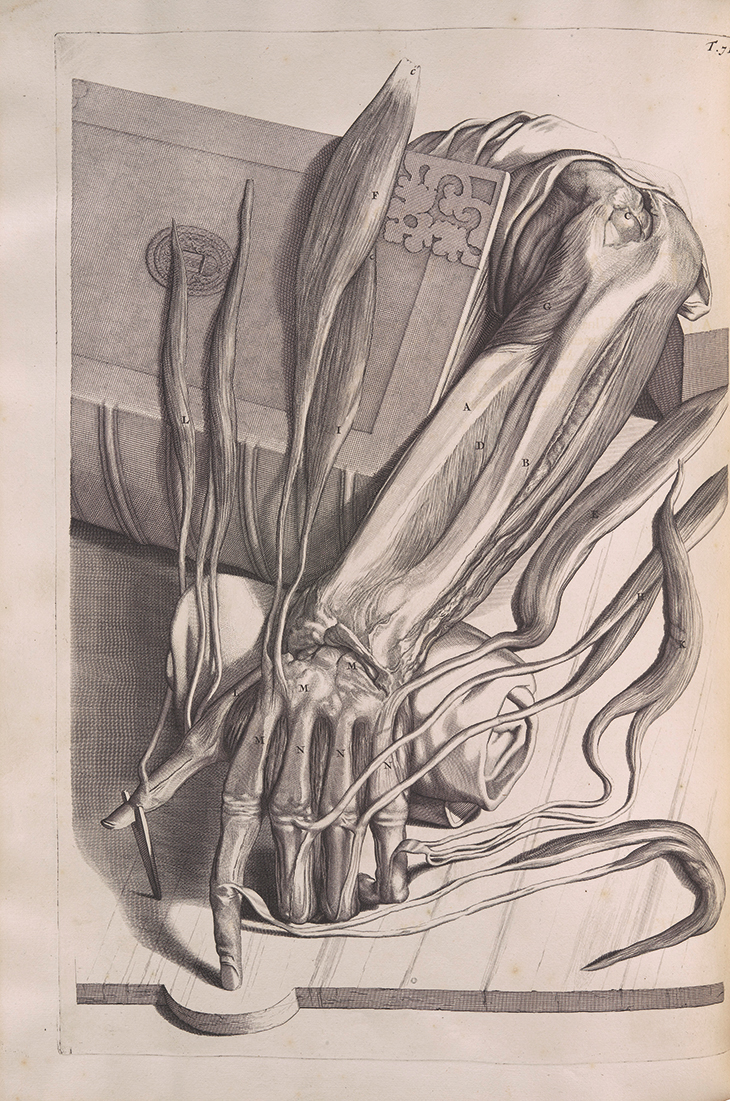This review of ‘The Human Touch: Making Art, Leaving Traces’ at the Fitzwilliam Museum, Cambridge, was published in the February 2021 issue of Apollo. Due to the national lockdown in the UK, the exhibition (originally scheduled to run from 6 January–3 May) has not yet opened to the public.
One way that an art exhibition can succeed is to marshal works into an argument, cajoling the viewer into seeing something in them they hadn’t seen before. The paradigmatic example of this for me is ‘Matisse: His Art and His Textiles’ at the Royal Academy in 2005, which argued that fabrics played a dominant role in Matisse’s visual imagination; the resonances between the swatches of cloth and the artworks were so clear that the visitor could do little more than shrug and marvel. Such exhibitions can be deeply satisfying for the viewer, and even more so for the reviewer, who has concrete issues to write about.
‘The Human Touch’, curated by Elenor Ling and Suzanne Reynolds, is not that kind of exhibition, though the catalogue suggests it started that way, as a show about how traces of making and ownership are left on works through time. The first object that meets the eye as you enter the exhibition space is a fragment from an Egyptian coffin belonging to a physician called Wepwawetemhat, who was buried between 1975–1790 BC. This piece of sycamore-fig wood is painted with human or humanoid figures, birds and animals, including what the label identifies as a Dorcas gazelle: inspect the animal’s brown hide closely and you can still see the artist’s fingerprints in the paint. Later on, there is the young Turner’s already half-abstracted landscape Fortified Pass, Val d’Aosta (1802) in watercolour, chalk and gum arabic, in which he has scratched out pigment to create a tree and left behind a thumbprint. Other works transformed by human contact include 15th-century panels depicting the Passion that were scored and slashed by Protestant iconoclasts, a 12th-century Pentateuch written in Samaritan in which the text has been worn away by reverential touches and kisses and the Chapman brothers’ ‘interventions’ in a volume of Goya prints.

Copper plate for the print Ruth II (1994), Frank Auerbach. Fitzwilliam Museum, Cambridge. Courtesy Marlborough Gallery; © Frank Auerbach

Diagram of the brain and senses in the Pseudo-Augustine De spiritu et anima (mid 13th century). Trinity College, Cambridge
The show has developed into something more ambitious but also much baggier, encompassing a number of ideas relating to the role of touch in our experience of the world and in art. Early on, there is a marvellous mid 13th-century schematic of the brain and the senses, a bulbous-nosed, bald head labelled with the faculties in the appropriate spot – olfactus on the nose, auditus next to a cauliflower ear, fantasia at the top of the brain; but tactus, touch, the only faculty that exists outside our heads, is a hand sticking out of the man’s robe. There follow depictions of people touching, holding hands, kissing. Captions draw attention to the tactile quality of certain works – a wax maquette of a dancer by Degas, or contrasting Auerbachs – the claggy, struggling impasto of an oil painting versus an etching plate where you can feel the rawness of the incisions (and see the artist or his collaborator’s fingerprints); and there are many hands – anatomical drawings and models, studies of hands by David Wilkie, Meissonnier and Agostino Carracci, and casts, drawings and photographs of the hands of artists. I found it hard to get my bearings: of course hands are a primary organ of touch, but they seem to have carried away the show – in an écorché model of a hand or the thousand-armed Tibetan boddhisattva Avalokitesvara, the sensory element seems to have been left far behind. At times, as in a page of Jude the Obscure annotated by Hardy for the printer, it seems that the show is groping towards the truism that we use our hands when we make things; at other times it is reaching for something even less specific.
While ‘The Human Touch’ does not persuade the intellect, it still succeeds in shifting your view of the works on display. One corner contains two pairs of works by Hogarth titled Before and After, both depicting a couple before and after sex. One of the pairs is represented here by prints that Hogarth made in 1736 after the original paintings (the exhibition is mostly limited to collections within the university – colleges, the University Library, the Fitzwilliam itself). It is set in a bedroom where a woman struggles to escape a man’s unwanted advances (Before), and then clutches at him, pleadingly, as he pulls up his britches to leave (After). This is Hogarth in cynical mood (and in truth, I could have done without it). But Before and After from 1730–31, painted in oils, is more romantic: this pair of lovers is in the countryside, among trees. Before, he holds her left hand gently in his and leans toward her; she leans back in at least a show of reluctance, but has not taken her hand away. After, they look breathless, their clothes disarranged, their hair dishevelled, and they lean into one another, their hands now in a mutual tender grip. In this context, that contact, skin upon skin, seems more central to the painting’s meanings, more touching – pun unavoidable – than before.

Anatomia humani corporis centum cinque tabulis…illustrata, by Govard Bidloo, published in Amsterdam, 1685, with engravings by Abraham Blooteling after drawings by Gerard Lairesse. Photo: by kind permission of the Syndics of Cambridge University Library
The works are transformed, too, by the circumstances in which they are being shown – by this numb year we have lived through, when touching other people has been illicit or frightening in new ways. There are new resonances – in a cast of a fifth-century BC funerary monument of Hermes taking a young woman’s hand to lead her to the underworld, or in a Burne-Jones painting of Orpheus trying to lead Eurydice back to the light, and in many of the other works here. Perhaps a particular poignancy grew from the fact that I was allowed in, on my own, two days before Christmas, a few hours before Cambridge was put into Tier 4 and visits to galleries and museums were forbidden absolutely. I was offered a chance to walk around with a curator, and said no because I thought it might be distracting; by the end, I regretted the choice – to be alone among so many clutching, disembodied hands felt rather terrible, as though I too was clutching at nothing. When the Fitzwilliam is eventually allowed to open again, and visitors can wander through one or two at a time, masked and carefully distanced, I imagine that many of them will leave, as I did, moved and troubled. Though it does not realise its intellectual ambitions effectively, in this respect ‘The Human Touch’ is a melancholy triumph.
For more information on ‘The Human Touch: Making Art, Leaving Traces’ visit the website of the Fitzwilliam Museum, Cambridge.
From the February 2021 issue of Apollo. Preview and subscribe here.














![Masterpiece [Re]discovery 2022. Photo: Ben Fisher Photography, courtesy of Masterpiece London](http://zephr.apollo-magazine.com/wp-content/uploads/2022/07/MPL2022_4263.jpg)
‘Like landscape, his objects seem to breathe’: Gordon Baldwin (1932–2025)